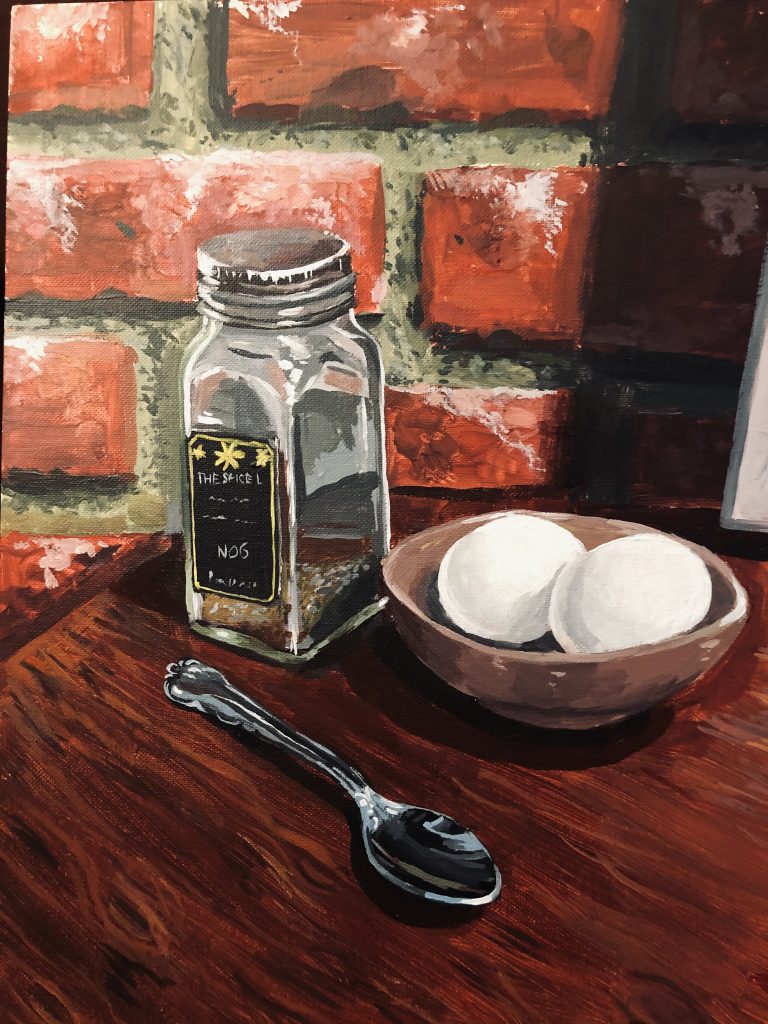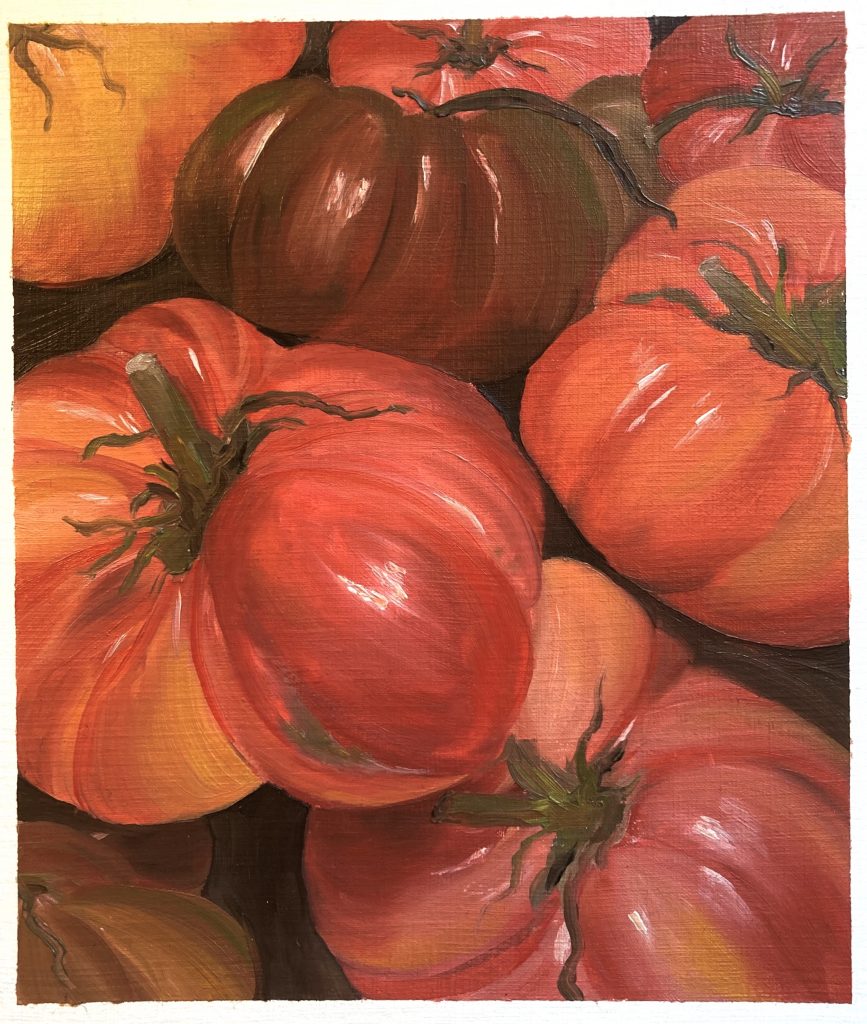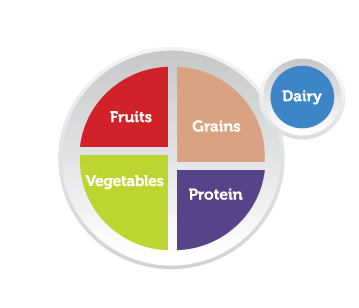Chapter 49: Nutrition
Lumen Learning, Dave Dillon
“A sound body nurtures a sound mind.”
– Plato
A diet is anything that you consume on a regular basis. If you drink Diet Coke for breakfast every day, that’s part of your diet. When people talk about “going on a diet,” they usually mean changing their existing dietary habits in order to lose weight or change their body shape. All people are on a diet because everyone eats! Having a healthy diet means making food choices that contribute to short- and long-term health. It means getting the right amounts of nutrient-rich foods and avoiding foods that contain excessive amounts of less healthy foods. The right mix can help you be healthier now and in the future.

Developing healthy eating habits doesn’t require you to sign up for a gimmicky health-food diet or lifestyle: you don’t have to become vegan, gluten-free, “paleo,” or go on regular juice fasts. The simplest way to create a healthy eating style is by learning to make wise food choices that you can enjoy, one small step at a time. See the ChooseMyPlate website for more guidelines. Additionally, the following current USDA Healthy Eating Guidelines replace the old “food pyramid.”
USDA Healthy Eating Guidelines
Make half your plate fruits and vegetables: Focus on whole fruits, and vary your veggies
- Choose whole fruits—fresh, frozen, dried, or canned in 100% juice.
- Enjoy fruit with meals, as snacks, or for a dessert.
- Try adding fresh, frozen, or canned vegetables to salads, side dishes, and recipes.
- Choose a variety of colorful veggies prepared in healthful ways: steamed, sautéed, roasted, or raw.

Make half your grains whole grains
- Look for whole grains listed first or second on the ingredients list—try oatmeal, popcorn, whole-grain bread, and brown rice.
- Limit grain desserts and snacks, such as cakes, cookies, and pastries.
Vary your protein routine
- Mix up your protein foods to include a variety—seafood, beans and peas, unsalted nuts and seeds, soy products, eggs, and lean meats and poultry.
- Try main dishes made with beans and seafood, like tuna salad or bean chili.
Move to low-fat or fat-free milk or yogurt
- Choose fat-free milk, yogurt, and soy beverages (soy milk) to cut back on your saturated fat.
- Replace sour cream, cream, and regular cheese in recipes and dishes with low-fat yogurt, milk, and cheese.
Drink and eat less sodium, saturated fat, and added sugars
- Eating fewer calories from foods high in saturated fat and added sugars can help you manage your calories and prevent obesity. Most of us eat too many foods that are high in saturated fat and added sugar.
- Eating foods with less sodium can reduce your risk of high blood pressure.
- Use the Nutrition Facts label and ingredients list to compare foods and drinks. Limit items high in sodium, saturated fat, and added sugars.
- Use vegetable oils instead of butter, and choose oil-based sauces and dips instead of those with butter, cream, or cheese.
- Drink water instead of sugary drinks.
Eat the right amount
- Eat the right amount of calories for you based on your age, sex, height, weight, and physical activity level. Visit the USDA SuperTracker, which can help you plan, analyze, and track your diet and physical activity.
- Building a healthier eating style can help you avoid obesity and reduce your risk of diseases such as heart disease, diabetes, and cancer.
Cornell University found that the average adult eats 92% of whatever he or she puts on their plate. One of the challenges is that portion sizes have drastically increased over the last 50 years.[1]
Healthy Eating in College
College offers many temptations for students trying to create or maintain healthy eating habits. You may be on your own for the first time, and you’re free to eat whatever you want, whenever you want. Cafeterias, all-you-can-eat dining facilities, vending machines, and easy access to food twenty-four hours a day make it tempting to overeat or choose foods loaded with calories, saturated fat, sugar, and salt. You may not be in the habit of shopping or cooking for yourself yet, and, when you find yourself short on time or money, it may seem easier to fuel yourself on sugary, caffeinated drinks and meals at the nearest fast-food place. Also, maybe you played basketball or volleyball in high school, but now you don’t seem to be getting much exercise.
On top of that, it’s common for people to overeat (or not eat enough) when they feel anxious, lonely, sad, stressed, or bored, and college students are no exception. It’s incredibly important, though, to develop healthy ways of coping and relaxing that don’t involve reaching for food, drink, or other substances. It’s also important to eat regular healthy meals to keep up your energy.
Activity: Assess Your Snacking Habits
Objective
- Recognize the temptations not to eat well in a college setting
Directions
- Keep a daily snack journal for one week: Write down the types and amounts of snack foods and beverages you consume between meals each day. Record the time of day and note where you eat/drink each item.
- At the end of the week, review your journal. Do you notice any unhealthy snacks or empty-calorie drinks? Are there any patterns? Are there times of day when you’re especially prone to choosing unhealthy snacks/drinks? Are there particular places where you tend to reach for junk food?
- In a short, reflective essay (1–2 pages long), describe what you observed about your snacking habits during the week. Identify any habits you’d like to change, and explain why. Describe several strategies you could use to break bad habits and replace unhealthy snacks with healthier ones. Explain why you think these strategies will be effective.
- Follow your instructor’s instructions for submitting assignments.
Licenses and Attributions
CC licensed content, Original:
- Nutrition. Provided by: Lumen Learning. Located at: https://courses.lumenlearning.com/suny-collegesuccess-lumen1/chapter/nutrition/ License: CC BY: Attribution
- Salty Eggs by Daelynn Meglasson. License: CC BY: Attribution.
- Heirloom Tomatoes by Jodie Talmadge. License: CC BY: Attribution No Derivatives.
Content previously copyrighted, published in Blueprint for Success in College: Indispensable Study Skills and Time Management Strategies (by Dave Dillon), now licensed as CC BY
CC licensed content, Shared previously.
- Planning a Diet. Provided by: Pierce College. Located at: https://courses.candelalearning.com/nutritionxmaster/chapter/planning-a-diet-content-needed-ryan/. License: CC BY: Attribution
Public domain content:
- MyPlate, MyWins. Provided by: USDA. Located at: http://www.choosemyplate.gov/myplate-mywins. License: Public Domain: No Known Copyright
Adaptions: Removed images, video, relocated learning objectives, removed KidsHealthorg. paragraph and footnote.
- Brian Wansink and Katherine Abowd Johnson, “The Clean Plate Club: About 92% of Self-Served Food is Eaten,” International Journal of Obesity, 39 (2015):371–374. ↵


